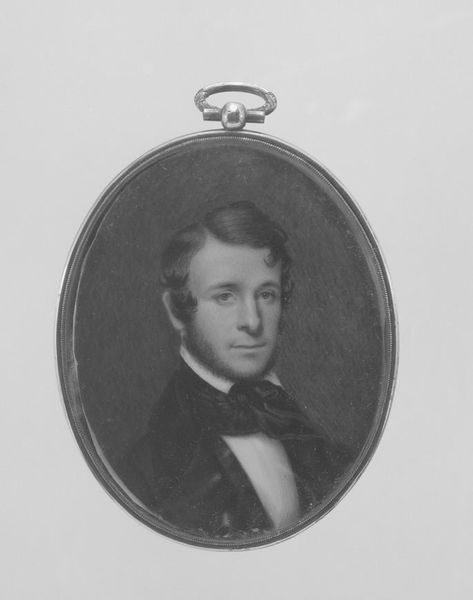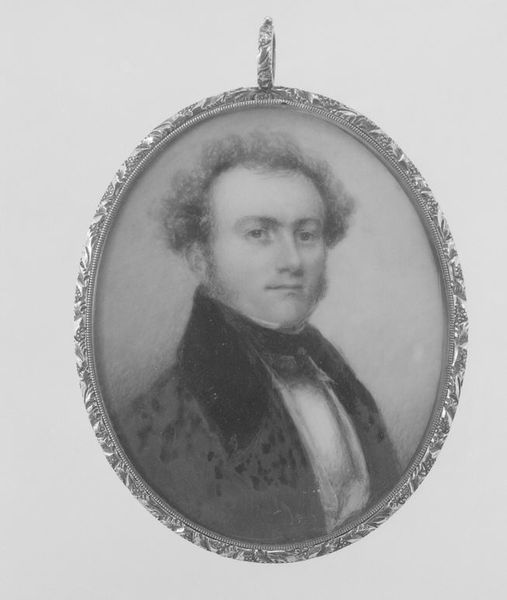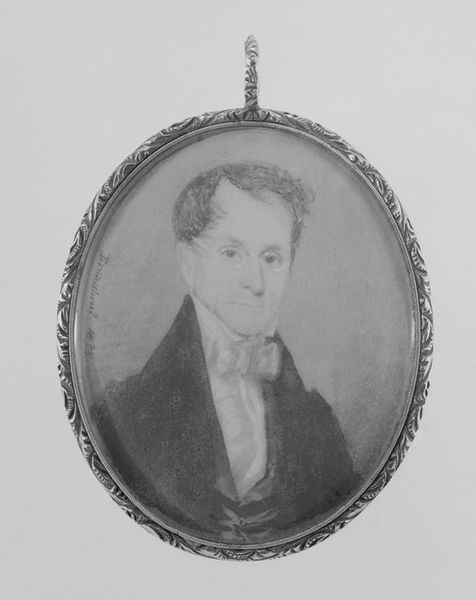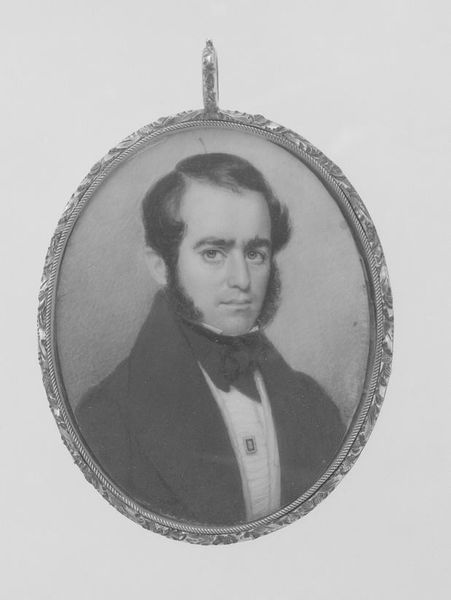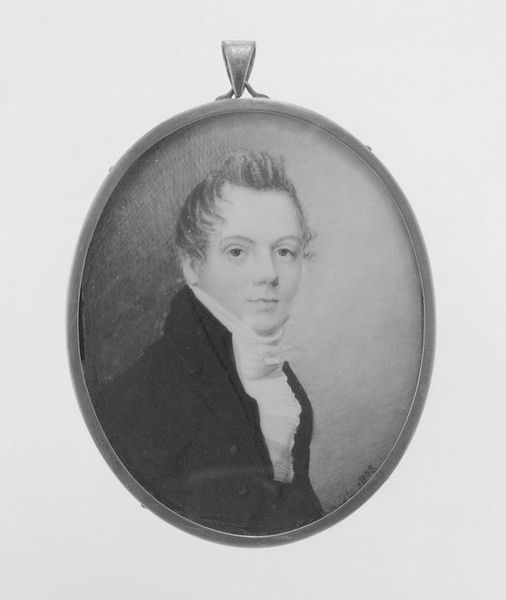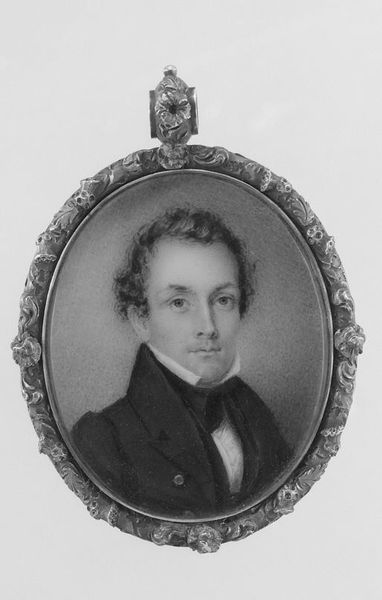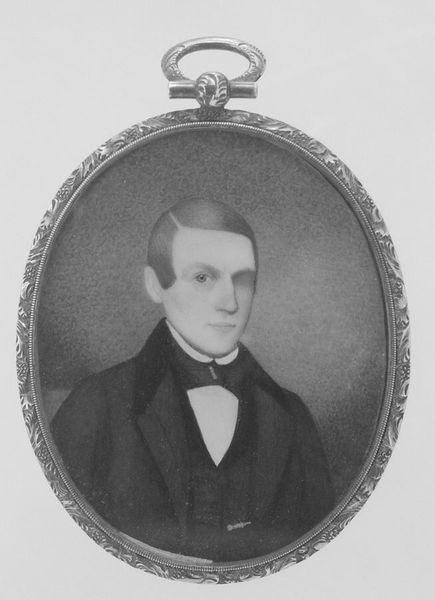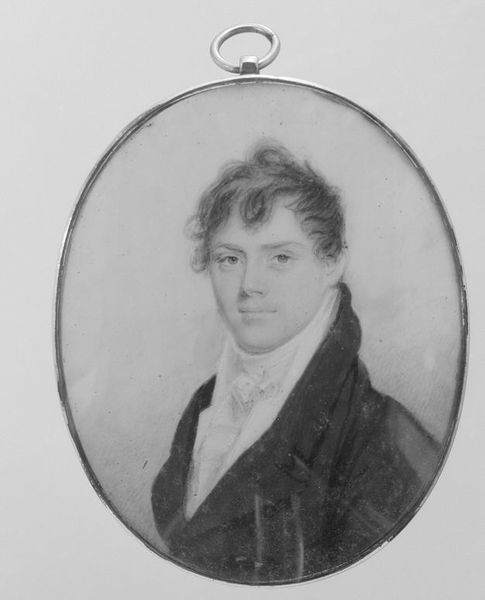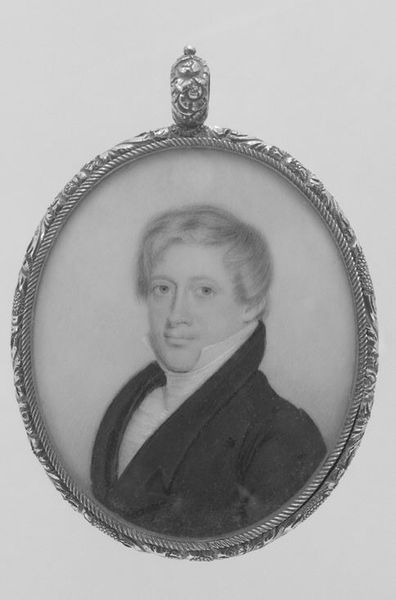
drawing, pencil
#
portrait
#
drawing
#
black and white theme
#
framed image
#
romanticism
#
black and white
#
pencil
#
men
#
academic-art
#
miniature
Dimensions: 2 11/16 x 2 1/8 in. (6.8 x 5.4 cm)
Copyright: Public Domain
Curator: Here we have "Portrait of a Gentleman" by Nathaniel Rogers, created sometime between 1787 and 1844. It's a miniature pencil drawing currently housed at the Metropolitan Museum of Art. Editor: My first thought? Intensely serious. That gaze could bore a hole through steel, despite being rendered in delicate pencil strokes. And that bow tie – impressively large, like he’s dared someone to comment on it. Curator: Well, miniature portraits like this were incredibly popular, especially among the burgeoning middle class. Think of them as the Instagram profiles of their day—carefully constructed presentations of self. Editor: Right! He’s saying: "I’m a gentleman of stature and seriousness," while also hinting that he is in the know with the fashions of the time. A delicate power play, all captured in this tiny oval. It's fascinating. Do you get a sense he has something to hide, behind the gaze? Curator: Interesting. Given the time, there is a potential class anxiety— the new bourgeoise needing to display respectability. There's a carefully managed expression—perhaps an intentional opacity serving a protective function against revealing anything that could jeopardize his social climbing. Also the very choice of a miniature, historically linked to the aristocracy, hints at that social mobility. Editor: Oh, absolutely. A borrowed tradition! But I can’t help imagining all the secrets a guy like that would hold. And the fact that it’s rendered in pencil…the most humble medium, it’s quietly rebellious. I can’t get over this, pencil gives so much space for the imagined secrets to be filled by our own minds, whereas an oil painting wouldn't have that impact. Curator: Yes! It’s that tension between the meticulous execution—that air of academic art—and the chosen medium that complicates the narrative. We can use it as a lens to examine masculinity and status anxiety during periods of social change. Editor: I think it gives him such power because even today it whispers and haunts instead of speaking loud. A very relevant power. Curator: Indeed. Considering it in today's context opens up an intriguing intersectional dialogue about visibility, self-representation, and historical continuities. Editor: I hadn't expected such depth from such a little portrait. Shows how much you can read in a drawing.
Comments
No comments
Be the first to comment and join the conversation on the ultimate creative platform.
